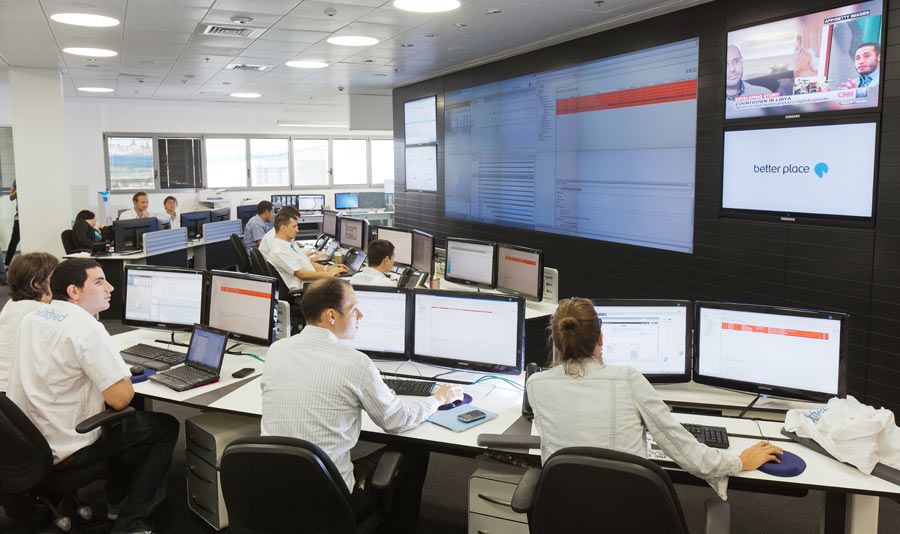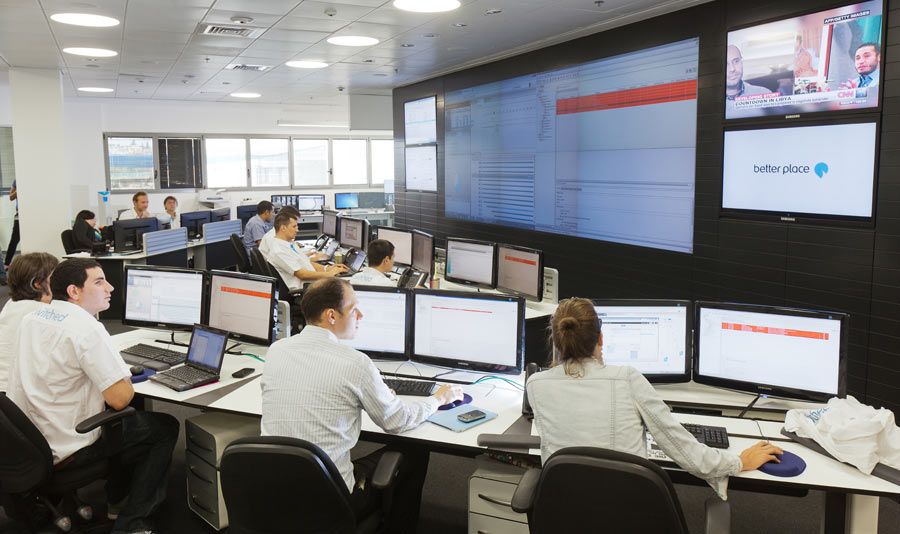

Sustainable Energy
Battery Fill-Up
Better Place’s switching stations allow electric cars to swap batteries during long trips.

Gal Perl, a product manager at the Israeli-based company Better Place, disconnects his electric Renault Fluence from a charge point at his company’s parking lot in Rosh Ha’Ayin. He enters his next destination into the car’s computer—which quickly calculates that the 70-mile journey is longer than his battery’s charge level will allow. The computer maps out a route that passes a battery switching station operated by Better Place. There, an industrial robot will quickly change the car’s battery for a fully charged one that will last the rest of the trip.
Better Place’s switching stations are an attempt to work around the limited battery capacity that is the biggest technological barrier to wider use of electric cars. Even the newest models cannot match the range of a conventional car with a full gas tank.
Better Place’s solution is to build networks encompassing charge points that drivers can use to recharge while they’re parked, and switching stations they can turn to if that charge runs out. The company’s robots can swap a depleted battery for a fresh one in less than four minutes, about the time it takes to fill a conventional car with gas. Recharging a car like Perl’s at a charge point takes up to eight hours.
In January the company will open networks in Israel and Denmark to serve hundreds of drivers. Renault has agreed to supply 100,000 of its cars for Better Place customers in those two countries by 2015. Users sign a service contract, similar to a cell-phone subscription, under which they get access to the switching stations and Better Place retains ownership of the batteries, an arrangement that reduces the cost of buying an electric car. A third network will launch in Australia in the second half of next year.